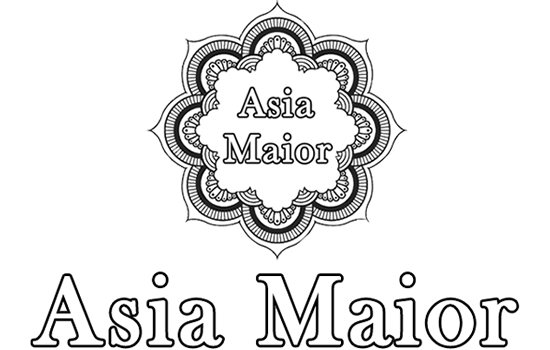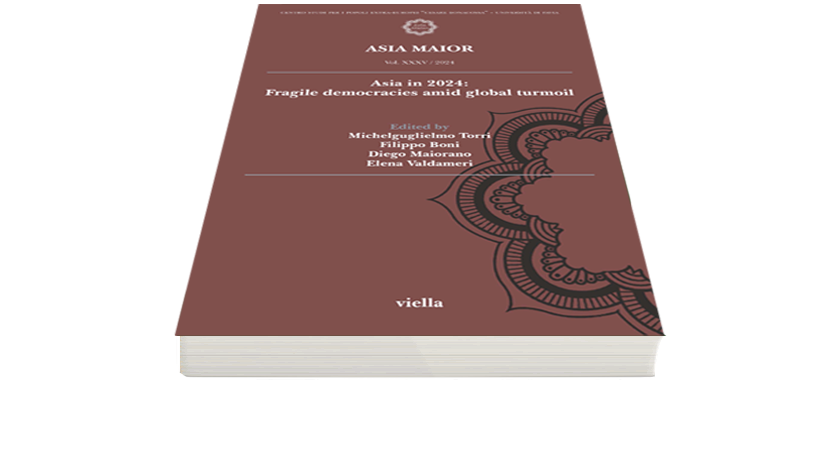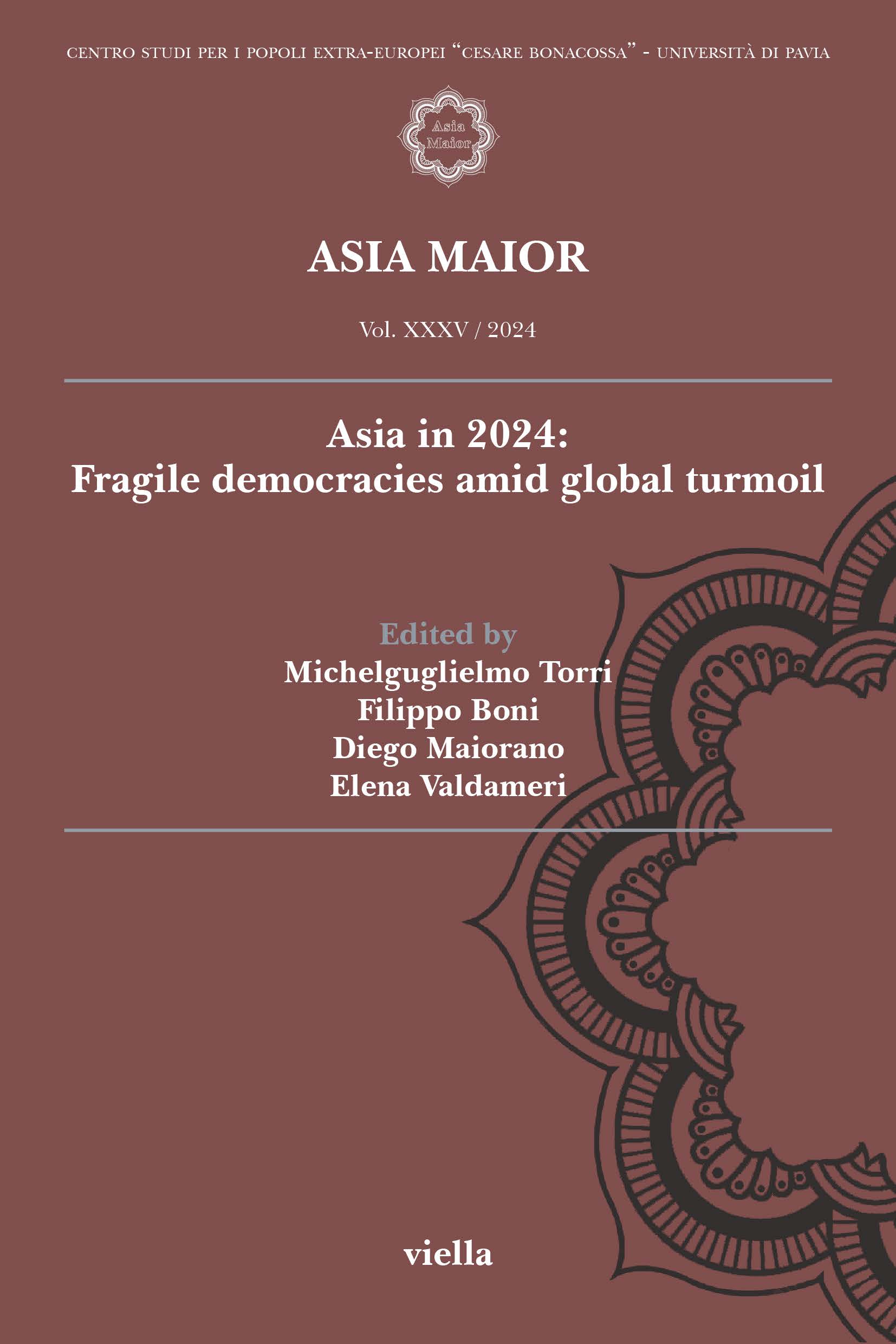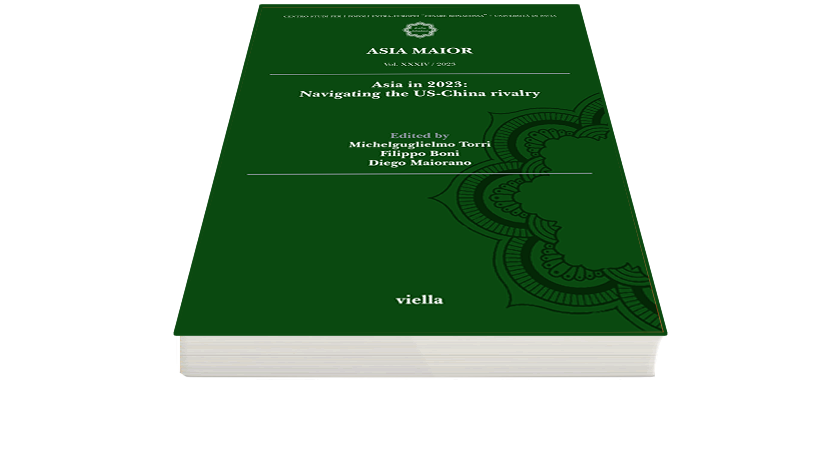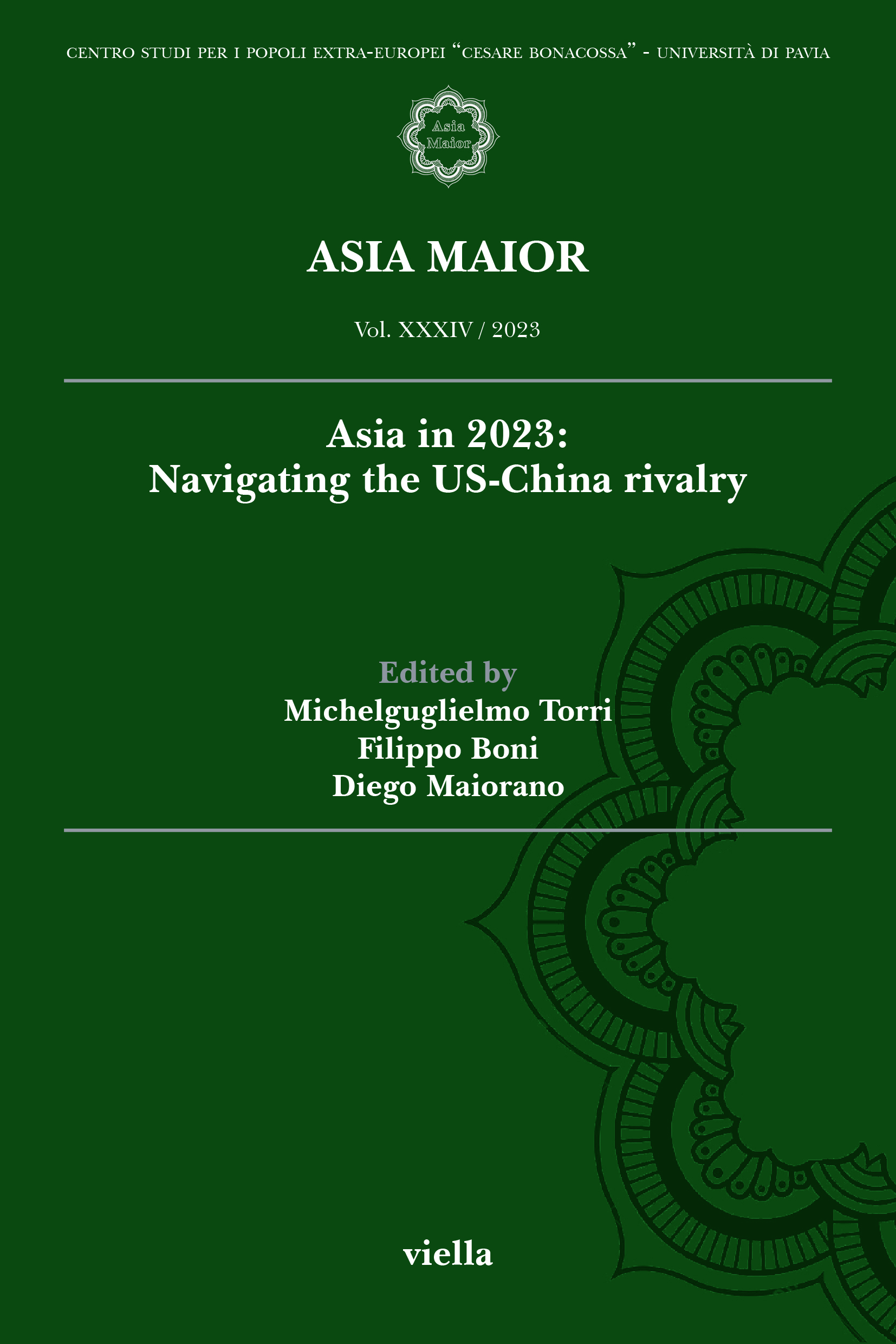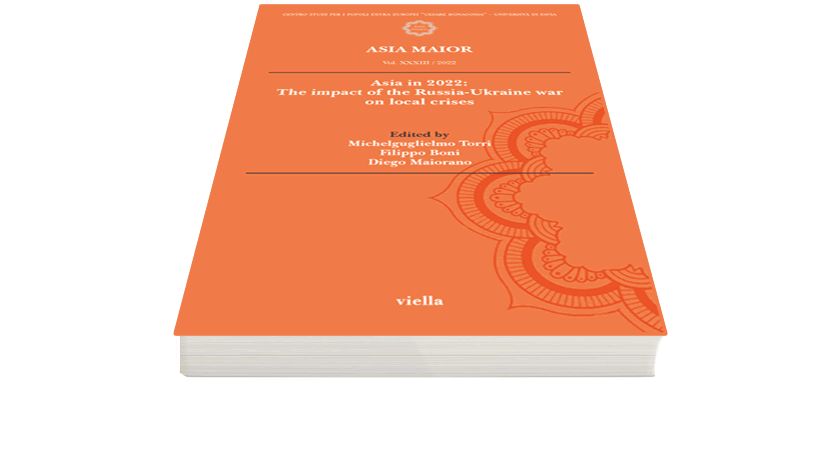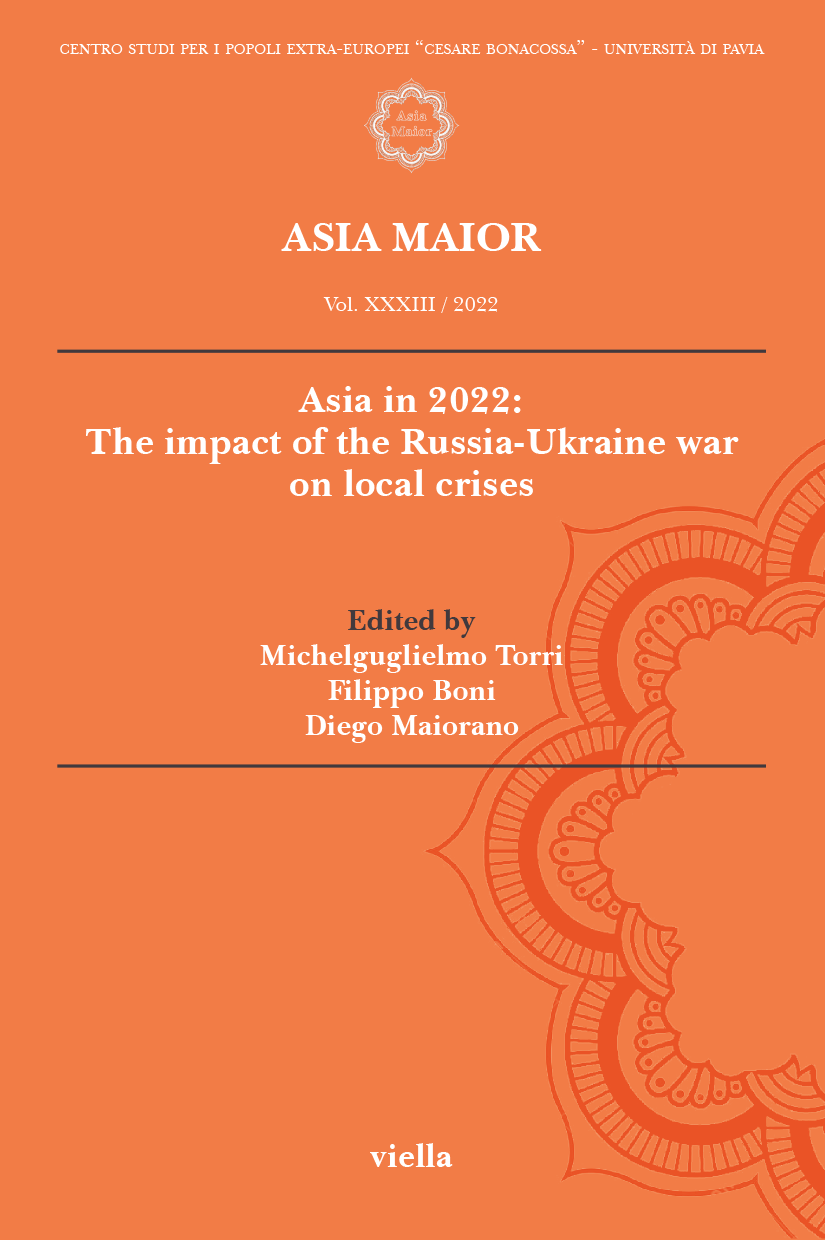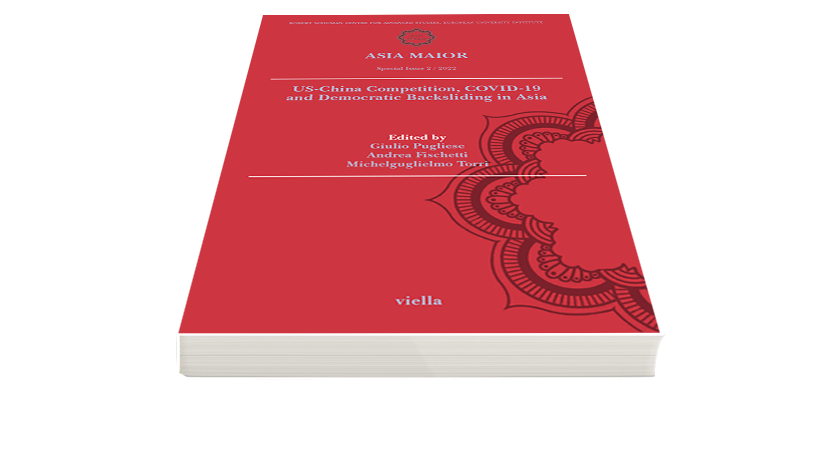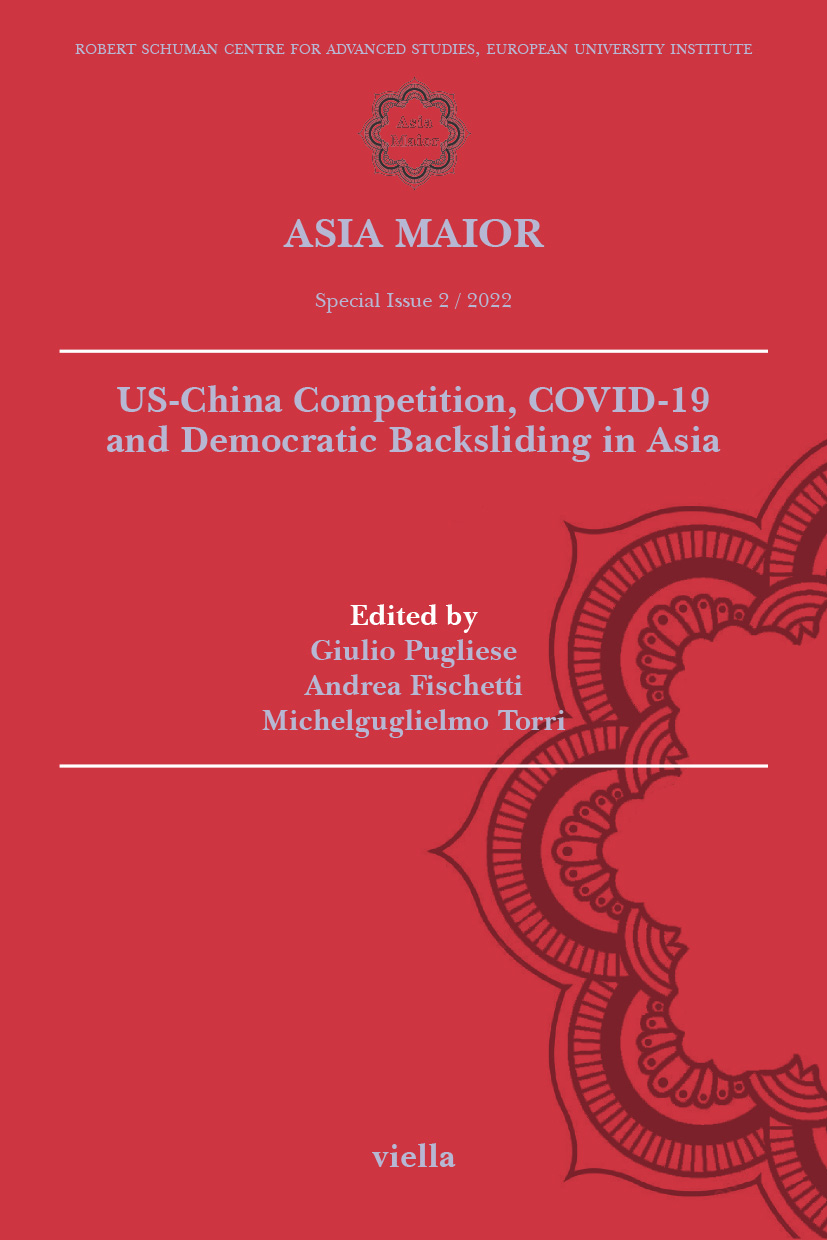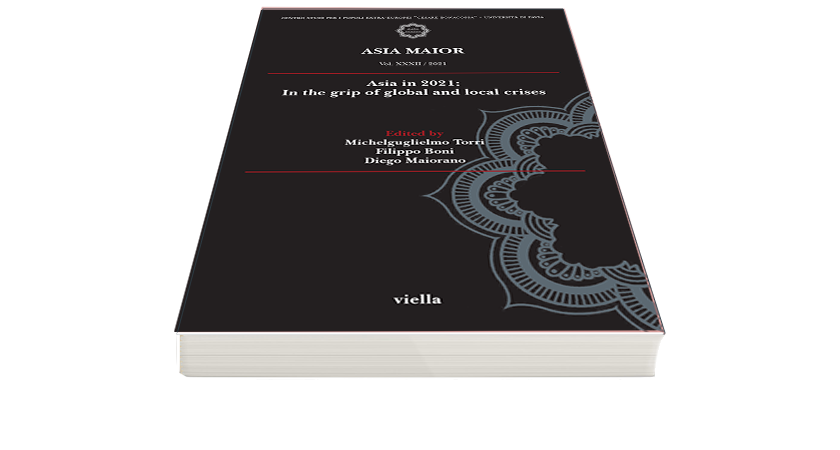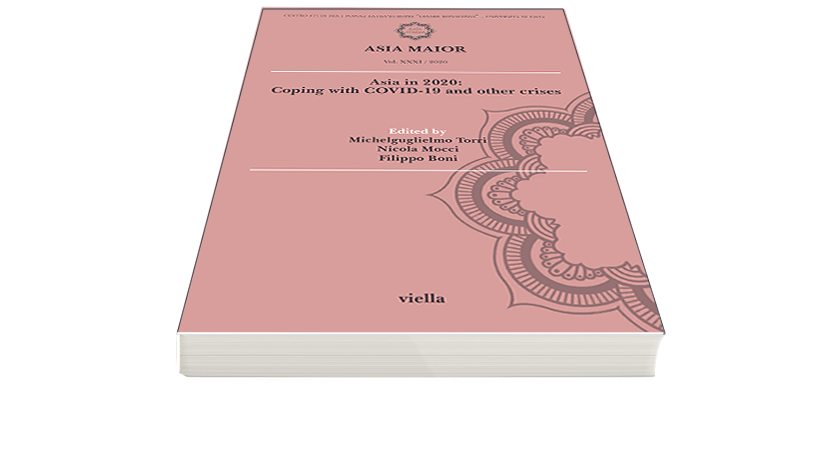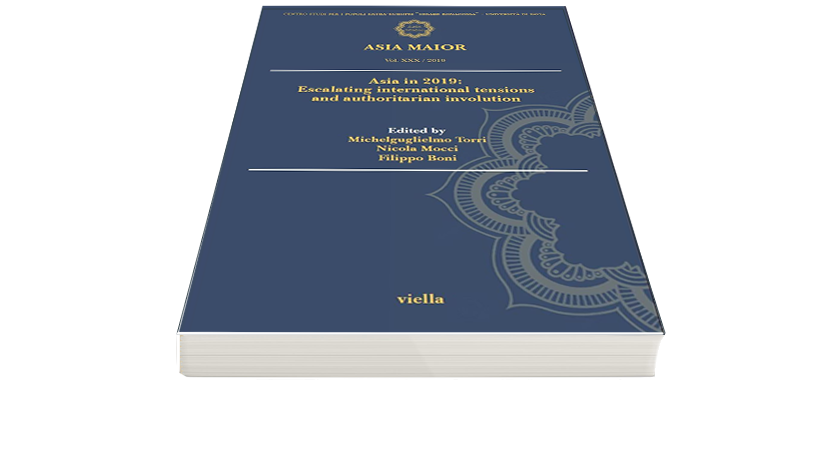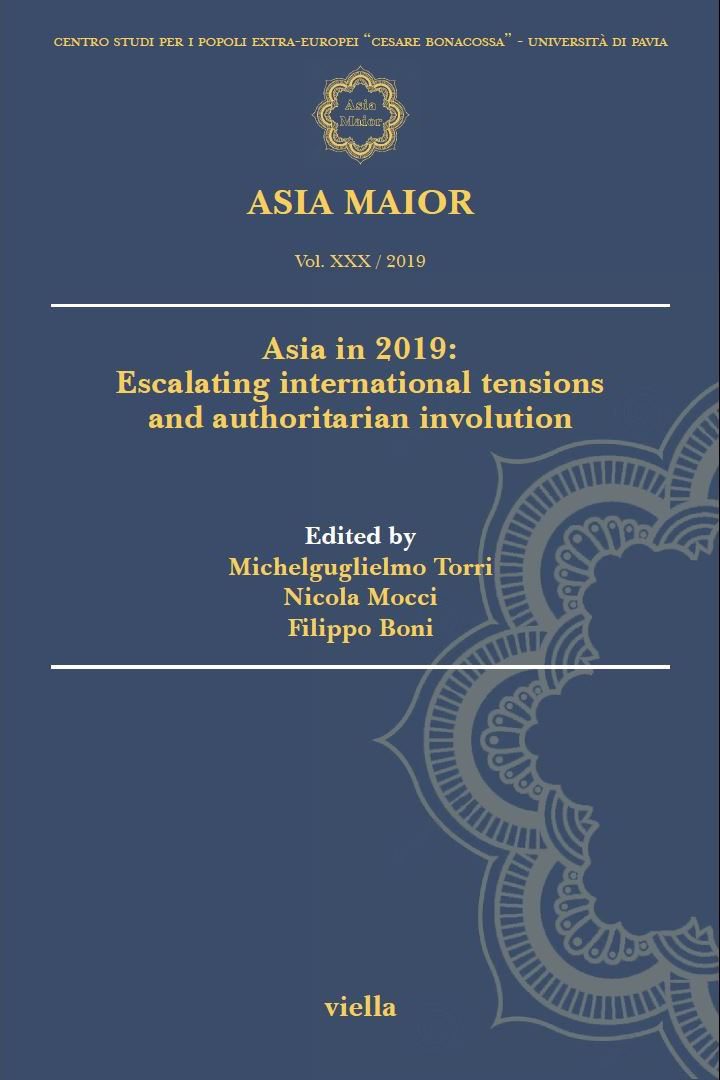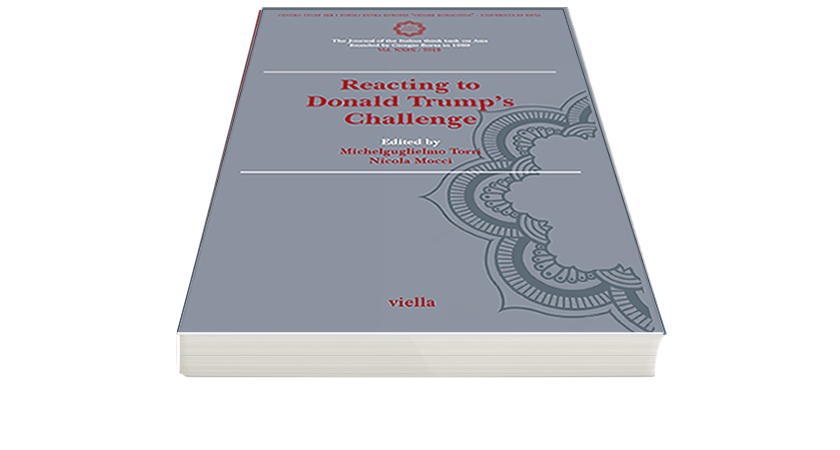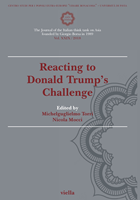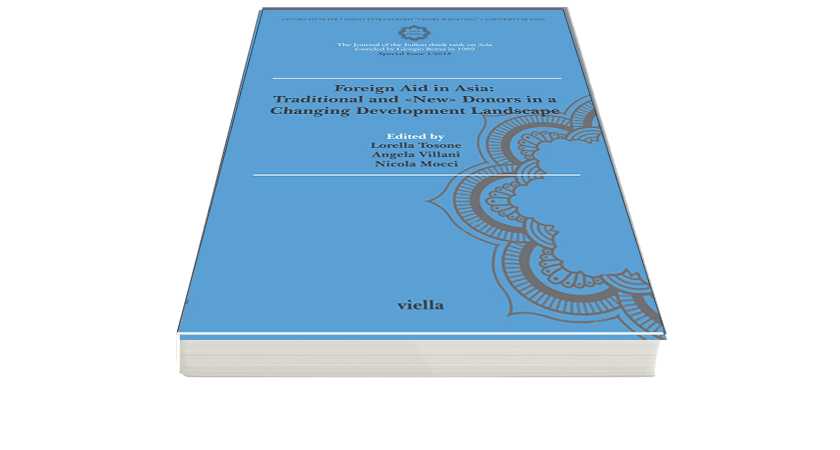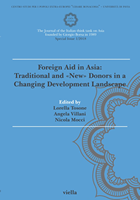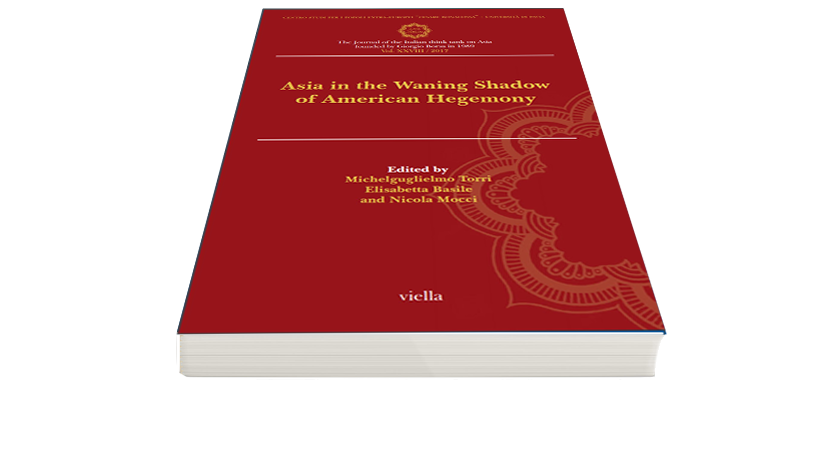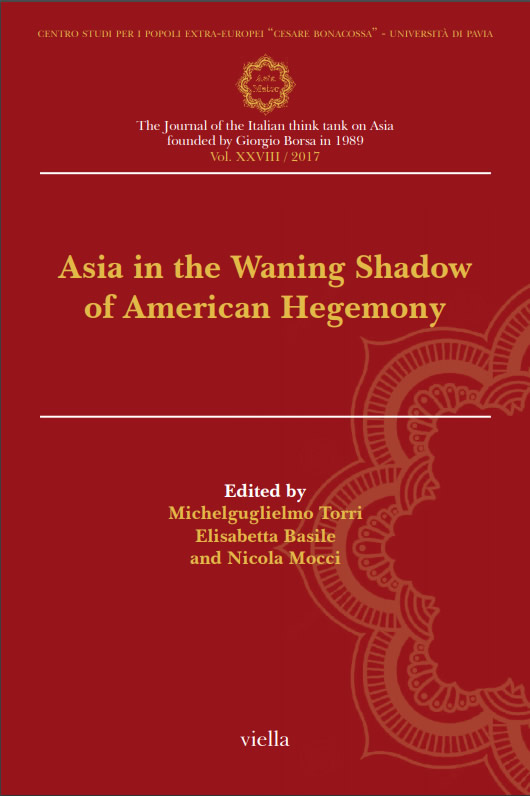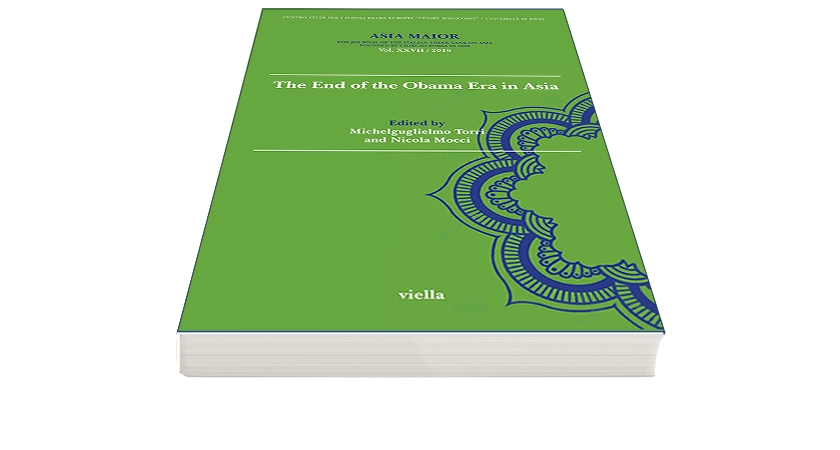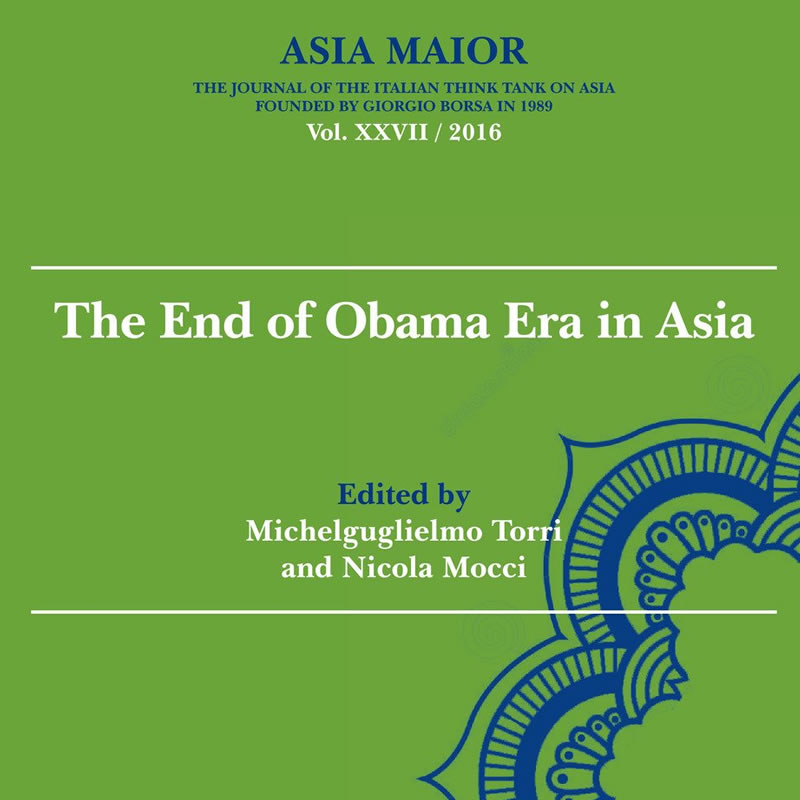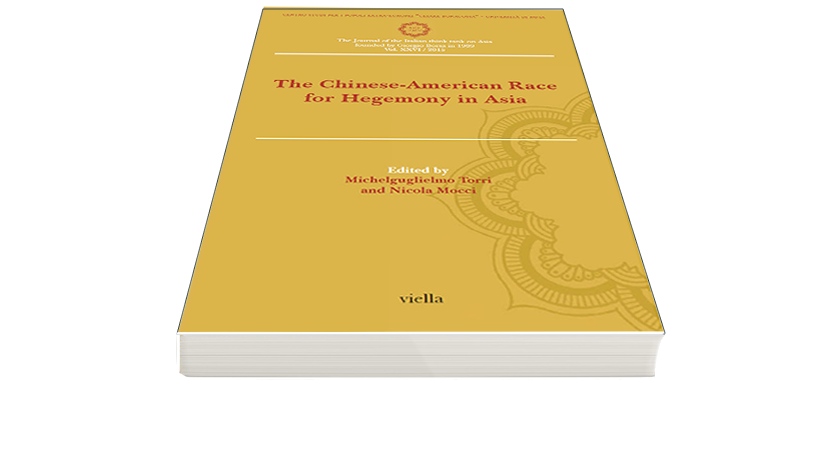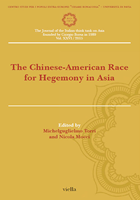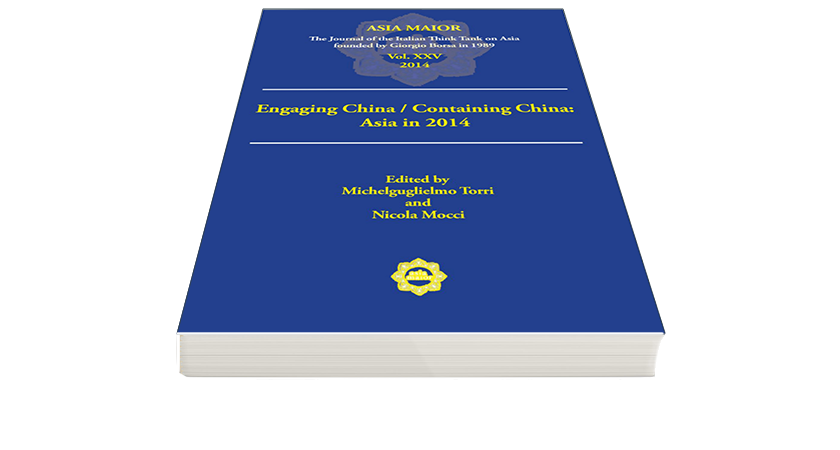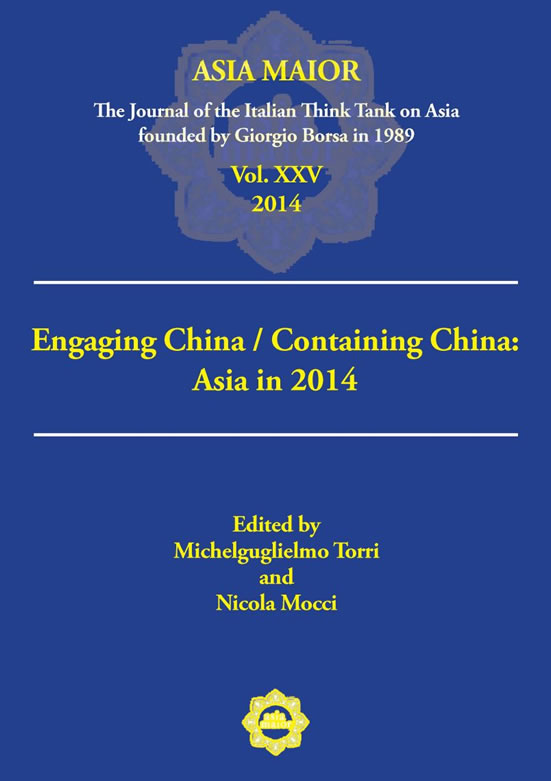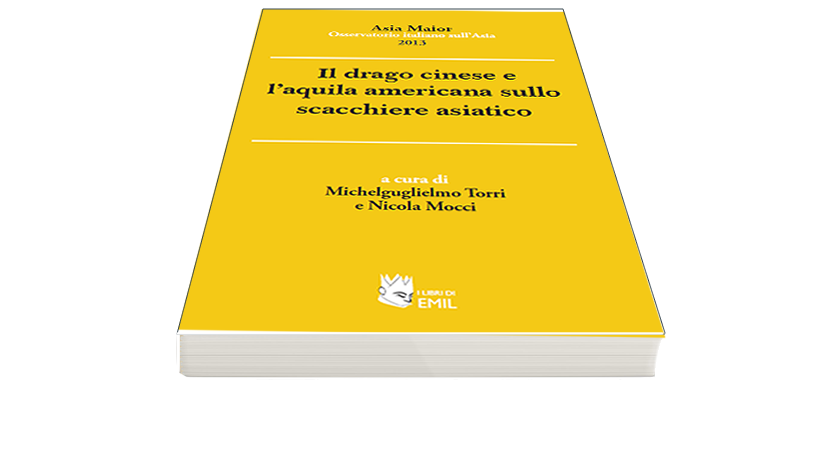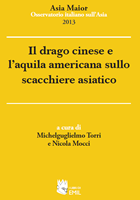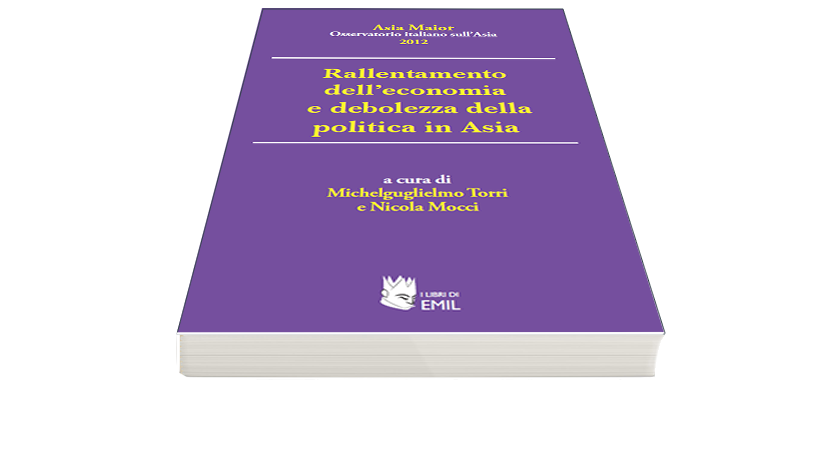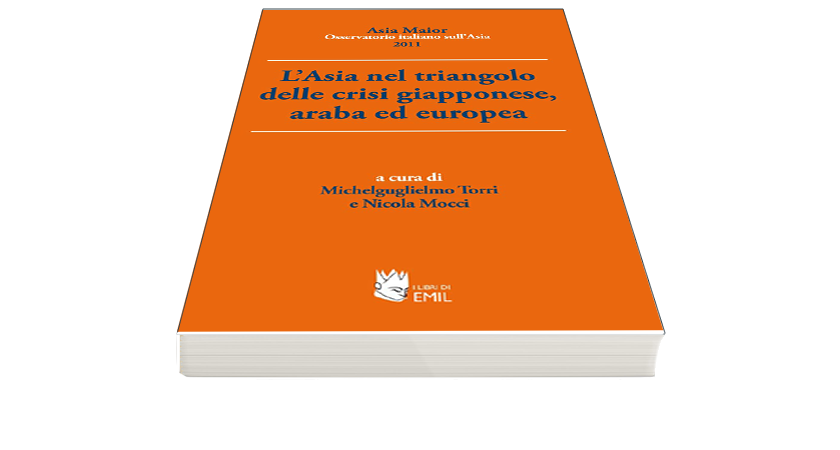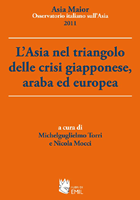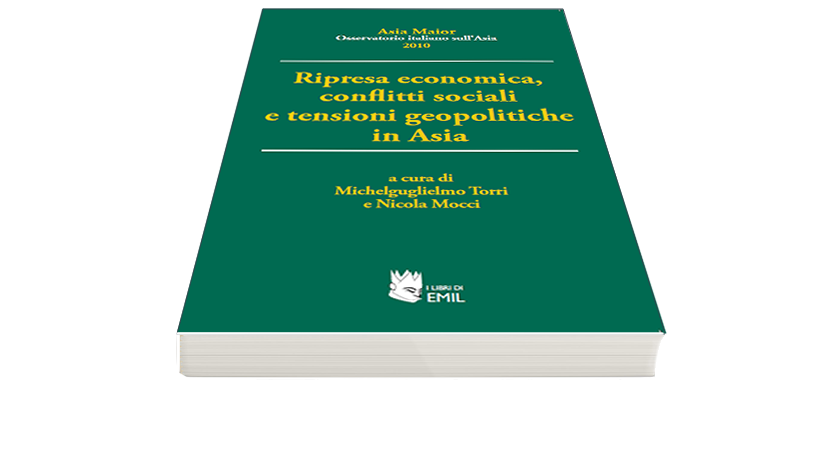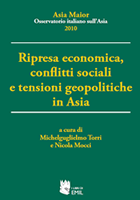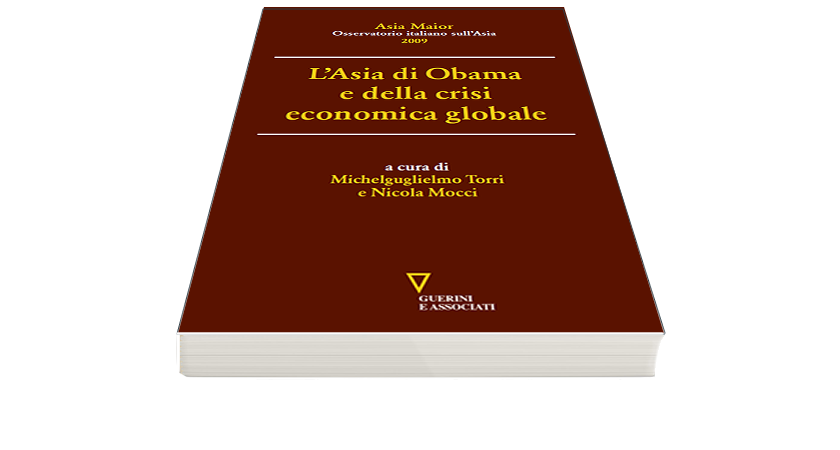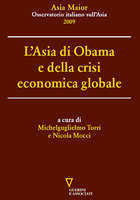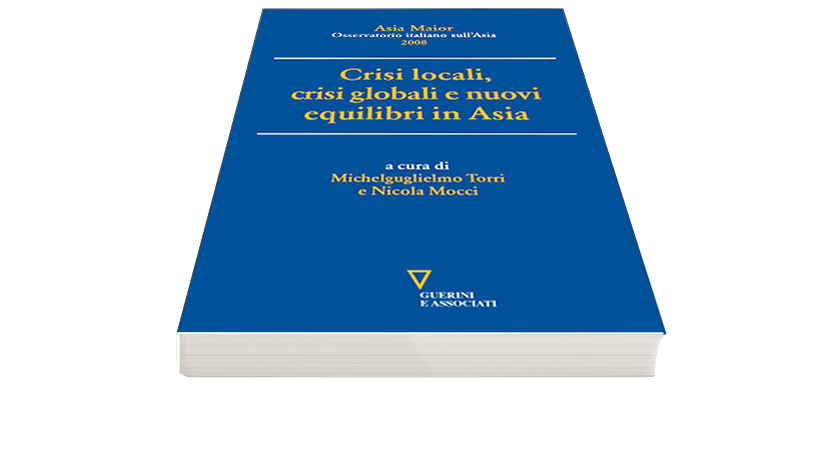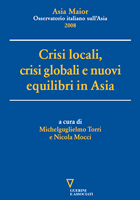Sri Lanka 2024: Political, economic, and geopolitical transformations
As 2024 unfolded, Sri Lanka stood at a crossroad. While economic stabilization efforts showed some progress with the last months showing deflation for the first time since 1961. The challenges of unemployment, debt restructuring and social impact remained pressing concerns. Politically, Sri Lanka witnessed a historic shift in its leadership reflecting the public desire for change in governance. On the geopolitical front, Sri Lanka’s ability to navigate the complex web of strategic interests balancing global and regional powers was tested.
Keywords – Elections; system change; democratization; foreign policy; governance.
1. Introduction
As Sri Lanka entered 2024, the country found itself at a pivotal crossroads, grappling with the lingering economic repercussions of its 2022 financial crisis, ongoing political upheavals, and mounting geopolitical pressures in the Indian Ocean region. The economic downturn of 2022, which led to Sri Lanka’s first-ever sovereign default, continued to shape the government’s policy trajectory. Meanwhile, the elections held in September and November 2024 reflected an increasing public demand for reforms, accountability, and decentralization.
Politically, 2024 marked a historic shift in Sri Lanka’s leadership. The presidential election, held on September 21, ushered Anura Kumara Dissanayake into office as the new president. His party, the National People’s Power (NPP) – a centre-left coalition – secured a landslide victory in the parliamentary elections on November 14, 2024, forming the new government. The defeat of long-entrenched political elites signalled a public rejection of traditional governance models, underscoring widespread calls for greater accountability and transparency. This electoral outcome reflected the continuation of public demands, voiced during the 2022 crisis, for deeper structural reforms, anti-corruption initiatives, and enhanced social welfare policies.
Economically, Sri Lanka’s recovery remained precarious. Up until his defeat in the September elections, President Ranil Wickremesinghe had steered the country’s recovery efforts under the guidance of the International Monetary Fund (IMF) and other key bilateral creditors. However, following his ousting, President Dissanayake and his administration chose to continue the IMF reform agenda without renegotiating its terms and conditions—despite campaign rhetoric suggesting otherwise [Bandara 2024, 7 March; France 24 2024, 7 March]. Given the NPP’s history as a centre-left alliance with Marxist-Leninist roots, the new government is likely to face significant challenges in balancing its populist economic promises with the structural reforms demanded by international financial institutions.
On the geopolitical front, Sri Lanka continued to navigate a complex and shifting landscape, balancing the strategic interests of regional and global powers. The year tested Colombo’s ability to maintain a delicate equilibrium between influential actors, particularly India and China, while accommodating the growing strategic engagement of the United States and its allies.
Against this backdrop, this article examines the interplay between Sri Lanka’s domestic political dynamics, economic reforms, and foreign policy strategies as the country responds to both internal challenges and external pressures. Through a multidimensional analysis, the article aims to offer a comprehensive overview of Sri Lanka’s political and economic landscape in 2024, while assessing the strategic implications of its foreign policy choices. Specifically, it explores how domestic political developments and economic reforms have shaped Sri Lanka’s foreign policy orientation and regional alliances. It will analyse key political reforms, shifts in party dynamics, and leadership changes that unfolded in 2024, evaluating their impact on governance structures and democratic processes. The article will also highlight major economic policies and recovery efforts under the Wickremesinghe administration and assess how these policies influenced the daily lives of citizens – ultimately contributing to the political transition. Finally, it will evaluate the new government’s foreign policy initiatives, with particular focus on evolving relations with key players including India, China, and the United States.
2. Political Developments in 2024
The 2024 elections marked a further weakening of Sri Lanka’s established political parties, accelerating the erosion of liberal democratic institutions and reinforcing the rise of populist politics in the country’s post-war context [Peiris 2022]. This trend in the political party system can be traced back to 2018, when the Sri Lanka Freedom Party (SLFP) fractured, leading to the formation of a new political party under the leadership of Mahinda Rajapaksa [Uyangoda 2018]. This development effectively ended the decades-long dominance of the UNP-SLFP-led two-party system that had persisted since independence. The newly formed Sri Lanka Podujana Peramuna (SLPP) initially enjoyed resounding electoral victories, but the economic crisis of 2022, coupled with widespread public demands for political overhaul, delivered a severe blow to the prevailing political order [Ruwanpura & Saleem 2025].
Sri Lanka’s democratic institutions have been steadily eroded by political interference and corruption, fostering deep public distrust. A survey conducted in January 2024 by the Centre for Policy Alternatives (CPA), involving 1,350 participants, revealed increasing disillusionment with parliament and political parties – a trend evident since 2011. Notably, while trust in these institutions waned, authoritarian rule and confidence in the military and judiciary remained comparatively higher [CPA 2024]. Successive governments’ efforts to consolidate power for self-serving purposes have particularly delegitimized the executive and legislative branches.
The anti-establishment sentiment that fuelled the 2022 mass street protests, known as the Aragalaya, was successfully harnessed by the National People’s Power (NPP) to secure political dominance in 2024. Positioned as an outsider to the mainstream political landscape, the NPP – led primarily by the Janatha Vimukthi Peramuna (JVP – capitalized on this discontent. Historically, the JVP had never garnered more than 5% of votes in national elections. Yet in 2024, the NPP achieved unprecedented victories in both presidential and parliamentary elections, securing a supermajority with 159 parliamentary seats. Alongside tapping into anti-establishment sentiment, the NPP’s campaign featured populist promises, including increasing public sector salaries and reducing taxes [Devapriya 2025].
However, the surge in populist and anti-establishment sentiment represented by the NPP is not without precedent. Similar themes were evident during the 2015 elections, which centred on anti-corruption and good governance, as well as the 2019 elections, which emphasized restoring national security and a disciplined, effective political system [Dassanayake & Gamage 2024]. The election of President Gotabhaya Rajapaksa in 2019, by an overwhelming majority, highlighted the continuing appeal of populist politics in Sri Lanka and raised questions regarding the role and resilience of liberal democratic institutions [Köpke 2022].
The 2019 elections also showcased the increasing influence of professional associations, such as Viyathmaga, in legitimizing fragmented political entities [Dissanayake 2020]. This trend is mirrored in the composition of the current NPP government, which brings together a coalition of civil society groups, trade unions, and the JVP. Historically marginalized due to its association with communist insurgencies in the 1970s and 1980s, the JVP has gained newfound legitimacy through the NPP’s broader, more inclusive appeal.
With an overwhelming legislative mandate, public expectations for the NPP government are exceptionally high. However, balancing these expectations while implementing necessary structural reforms—without succumbing to populist pressures—remains a significant challenge. Despite the government’s strong parliamentary majority and capacity to enact progressive political reforms, economic constraints severely limit its policy options [Perera 2023]. The IMF program initiated in 2023 requires politically costly reforms, which had previously sparked widespread opposition during the Wickremesinghe administration. While the new government possesses the mandate to carry out such reforms, clear public communication regarding these constraints has, thus far, been largely absent
2.1. Creating a National Space
While the NPP’s presidential candidate experienced some setbacks in minority-dominated regions such as the North, East, and hill country, the party’s strong overall performance in the 2024 parliamentary elections signalled noteworthy gains even in these traditionally pro-UNP/SJB (as a national political party option) areas. A particularly historic achievement was the NPP’s success in securing six seats in Jaffna – a first for a ‘national party.’ This breakthrough was the result of the NPP’s deliberate outreach efforts and its anti-corruption narrative, which resonated not only with local voters but also among diaspora communities [Gamage & Kaur 2025]. The fragmentation of traditional ethnic coalitions, particularly the Tamil National Alliance (TNA), further contributed to this outcome.
The general elections of 2024 underscored that voter disillusionment with established political parties extended to ethnic minority communities as well [Wedagedara and Jayasinghe, 2024]. While the Ilankai Tamil Arasu Kachchi (ITAK – the main political party within the TNA – managed to perform relatively well in the Eastern district of Batticaloa, other minority parties struggled. Specifically, the principal Muslim political parties, the Sri Lanka Muslim Congress (SLMC) and the All Ceylon Muslim Congress (ACMC), suffered notable electoral losses [Uyangoda 2024].
A significant factor behind the NPP’s appeal among minority communities was the relative decline of majoritarian nationalist rhetoric (Srinivasan, 2024). The anti-establishment stance of the Aragalaya protests momentarily weakened the exclusionary Sinhala Buddhist nationalism that had gained prominence in the post-war period. However, the global resurgence of right-wing conservatism – exemplified by the re-election of Donald Trump – has rekindled nationalist discourse both online and in mainstream media. This ideological space is increasingly being occupied by left-nationalist groups such as the Sri Lanka Podujana Peramuna (SLPP), led by the Rajapaksa family, and the Mahajana Eksath Peramuna (MEP), which includes members formerly aligned with the Rajapaksa political camp. These groups present a potential challenge to the NPP government.
Although public support for the NPP remains strong (Verité Research, 2025), any failure to deliver on its ambitious campaign promises could create opportunities for nationalist factions to re-emerge as viable political alternatives.
2.2. Managing Populist Politics with Pragmatism
The new government has quickly encountered significant challenges in reconciling its populist campaign promises with fiscal realities. While it pledged to lower fuel prices, raise public sector salaries, and increase tax thresholds, delivery on these promises has so far been partial. Fuel prices were slightly reduced, and subsidies for farmers and fishermen were maintained – both measures previously approved by the outgoing administration [EconomyNext, 2024a]. Additionally, the government authorized a 2,000 km rural road renovation project in the Northern and Eastern provinces. However, the inaugural budget for February 2025 suggests that capital expenditure will remain constrained (PublicFinance.lk, 2025).
Ideologically, the NPP government faces a delicate balancing act between the IMF-driven liberal economic policies it has inherited and the expectations of its left-leaning base [Skanthakumar, 2024; Gamage & Dassanayake, 2025]. The government’s 2025 budget adheres to fiscal discipline measures mandated by the IMF and enshrined in the Public Finance Management Act, notably aiming for a primary budget surplus of 2.5% of GDP. Despite IMF-imposed restrictions on state sector expansion, the government approved the recruitment of 7,500 new public employees and increased salaries for state sector workers [Ada Derana, 2025; Newswire, 2025]. Key budget allocations also included an LKR 20 billion bailout for SriLankan Airlines – a loss-making state-owned enterprise – and a 3% increase in military expenditure, bringing it to Rs. 442 billion [PublicFinance.lk, 2025]. Welfare spending rose to Rs. 232.5 billion, reflecting the government’s inclusion-focused agenda and its commitment to enhancing social welfare, particularly in health and education sectors. However, the increase, while symbolically significant, is modest in relative terms.
Central to the NPP’s electoral success was its focus on anti-corruption, accountability, and recovering stolen state assets; elements of kleptocracy that it characterized the past governments to be. Public support was driven by widespread perceptions that nepotism and elite patronage networks played a central role in precipitating the 2022 crisis. Since taking office, the government has prioritized anti-corruption efforts, institutional efficiency, and accountability, positioning itself as a “government of the people”—committed to austerity and simplicity, in sharp contrast to the mismanagement and excesses of prior administrations. Key actions have included publicized arrests of and confiscation of illegally acquired assets owned by politicians from previous governments, demands for the eviction of former President Mahinda Rajapaksa from his official residence, and the establishment of an Independent Prosecutor’s Office – a significant institutional reform aimed at enhancing transparency and accountability [EconomyNext, 2025; Samaraweera, 2025]. Public procurement reforms have also been proposed to prevent misuse of state resources [EconomyNext, 2024b]. Nevertheless, emerging critiques point to a lack of high-profile corruption prosecutions, raising questions about the effectiveness of these initiatives and the limits of political rhetoric.
The NPP has further promised substantial constitutional reforms during, including the abolition of the Executive Presidency, widely criticized for its centralization of power and its role in the country’s political and economic crises. While the President has announced plans to introduce a new constitution within three years, public consultations are yet to commence.
Economically, the NPP government has largely maintained continuity with the policies of the previous administration, retaining key officials in influential decision-making roles, such as the Central Bank Governor and the Secretary to the Ministry of Finance. This suggests a deliberate effort to sustain the IMF program and prior economic reforms. In line with its clean governance platform, the NPP also pledged to ensure meritocratic appointments. Critics have observed, however, appointments where there is conflict of interest, and of political loyalists that have been appointed to various positions where there are concerns that these moves might contribute to bureaucratic resistance by disrupting established institutional hierarchies and traditions [Bandara, 2025].
2.3. Opposition Political Parties and the Election Aftermath
The performance of opposition political camps in the 2024 parliamentary elections reflected the growing delegitimization of the major political parties (or factions) that had previously governed Sri Lanka. The Samagi Jana Balawegaya (SJB) and the New Democratic Front (NDF)—informally led by former President Ranil Wickremesinghe and comprising political actors from both the SLPP and UNP – were increasingly unpopular in the lead-up to the elections. Both were widely viewed as part of the entrenched ‘old political guard’ [Uyangoda and Peiris, 2024]. This prevailing anti-establishment sentiment, combined with infighting between the two camps, contributed significantly to their defeat. The SJB, the main opposition party, particularly struggled to differentiate itself ideologically. Despite its leader’s pro-poor political rhetoric, it found itself squeezed between the NPP’s centre-left stance and the NDF’s centre-right, liberal positioning, making it difficult to present a distinct political alternative.
Following the elections, speculation has grown over a potential alliance between the SJB and UNP to form a liberal front to counterbalance the NPP, especially in light of upcoming local government elections in May 2025. However, such a coalition has not been forthcoming, largely due to personal rivalries of the two parties’ leaders and, to some extent, evolving political and ideological differences among the two parties.
Beyond these two major opposition blocs, several smaller parties also underperformed but remain noteworthy due to their potential for future mobilization. Chief among these is the Sri Lanka Podujana Peramuna (SLPP), now led by Namal Rajapaksa, son of former President Mahinda Rajapaksa. Despite being the governing party in the 2020 elections, the SLPP secured only three seats in 2024. While now diminished, the SLPP still embodies a ‘left’ nationalist position that has historically resonated with the Sinhala majority. In parallel, Dilith Jayaweera’s Mawbima Janatha Pakshaya (MJP) – which holds one parliamentary seat – also seeks to lead the nationalist discourse. Both parties are attempting to capitalize on the global resurgence of right-wing and nationalist politics, seen prominently in the US and Europe, to regain relevance.
The recent spike in drug-related violence in Sri Lanka has also provided an opportunity for certain opposition groups, particularly those aligned with the Rajapaksa camp, to reignite a national security discourse. Leveraging this issue, they have sought to undermine the credibility of the current government. This strategy has reignited public anxieties surrounding safety and law enforcement, casting some doubt on the NPP’s capacity to maintain order [Jayawardena, 2025]. Addressing drug usage and related violence was one of the NPP’s key campaign promises, but the increase in incidents has allowed opposition actors to question its effectiveness and commitment. This mirrors political tactics used after the 2019 Easter bombings, when similar fears over national security were instrumental in bringing Gotabaya Rajapaksa to power. The current discourse not only exploits public fears but also aims to reshape the political narrative by portraying the NPP leadership as weak or ineffectual in safeguarding the nation.
With local government elections scheduled for the first half of 2025, and following some setbacks in cooperative-level elections, the NPP faces growing pressure to deliver on its campaign promises in order to sustain its post-election momentum. Particularly in light of the structural reforms initiated by former President Ranil Wickremesinghe under the IMF program, the government’s ability to meet public expectations is crucial. The economic hardships endured since 2022 have heightened these expectations, making tangible progress essential for extending the NPP’s honeymoon period.
2.4. Social Challenges and Government’s Response
The economic crisis of 2022 had a devastating impact on living standards in Sri Lanka, leading to a sharp and sustained rise in poverty. According to the World Bank, over 6 million people (30% of the population) were pushed below the poverty line by the end of 2022. By 2023, poverty levels remained alarmingly high at 25.9%, compared to 11% in 2019, and are projected to stay above 22% until at least 2026 [Gunadasa, 2024; World Bank Group, 2024]. Household coping mechanisms, such as cutting spending on health, education, and nutrition, further exacerbated vulnerabilities [Skanthakumar, 2024]. Women, in particular, bore the brunt of the crisis, as reflected in the surge in female emigration for domestic labour. In 2022, out of over 311,000 registered migrant workers, more than 124,000 (40%) were women [Kotalawela, 2024].
The crisis also deepened multidimensional poverty, affecting sectors like education, healthcare, food security, and basic infrastructure [Athukorala, 2024; UNDP, 2023]. Regional disparities widened, disproportionately impacting rural and estate sector communities [Department of Census and Statistics, n.d.]. As of December 2024, the National Poverty Line stood at LKR 16,619 (US$ 56.94), with significant variation between urban and rural areas. The rural roots of the crisis were evident during the farmers’ protests in the second half of 2021, following the government’s decision to ban chemical fertilisers. This shift to organic fertilisers significantly worsened the economic crisis by causing a 20% drop in rice production within six months and an 18% decline in tea production which is the country’s main agricultural export (Torrella, 2022).
In response to the increasing economic hardships, the government introduced safety net programs, most notably Aswesuma, launched post-crisis to reform poverty alleviation mechanisms and address the inefficiencies of the long-standing Samurdhi program [Wanigasinghe, 2023]. However, while Aswesuma provided some financial relief, its scope was limited, and implementation challenges hampered its effectiveness. Critics contend that Aswesuma failed to tackle structural inequalities in employment, education, and healthcare, and that the financial assistance offered was inadequate, especially amid persistent inflation.
The NPP government has proposed replacing Aswesuma with the Prajashakthi program, aiming for a more targeted and participatory approach. Key features include using updated indicators like electricity consumption to identify beneficiaries, enhancing community involvement, and increasing the minimum cash grant to Rs. 10,000 per family. The program also seeks to create pathways for long-term independence and ensure fiscal sustainability through digital integration [Hurulle, 2024].
Food insecurity remains a significant concern, closely linked to poverty. The 2024 Global Hunger Index ranked Sri Lanka 56th out of 127 countries, with a score of 11.3, indicating a moderate level of hunger. According to the Index, 4.1% of the population is undernourished, 12.6% of children under five are stunted, and 10.8% are wasted [Concern Worldwide and Welthungerhilfe, 2024].
Despite some improvements in key economic indicators, labour market participation and overall social well-being remain pressing challenges. Although unemployment dropped to 4.5% in the first quarter of 2024, down from the same period in 2023 [Department of Census and Statistics, 2024], labour force participation also declined – from 49.9% in early 2023 to 47.1% in early 2024 [World Bank Group, 2024]. Persistently high unemployment, coupled with increased poverty, contributed to falling household incomes, exacerbating food insecurity and reflecting in Sri Lanka’s declining Hunger Index ranking [Vipulaguna et al., 2025].
These indicators underscore the long-term effects of the 2022 economic crisis and structural dismantling of the welfare system since the 1980s, and highlight the urgent need for comprehensive social policies that move beyond short-term relief to address underlying structural issues—particularly in employment, education, and healthcare—to ensure sustainable recovery and inclusive growth.
3. Economic Landscape and Key Policy Changes
Sri Lanka’s economic landscape in 2024 presented a mixed picture, marked by signs of recovery alongside persistent challenges. The country’s trajectory was shaped by policy reforms and global economic conditions. Although key macroeconomic indicators showed stabilization, deep-seated structural weaknesses and socio-economic disparities persisted. Fiscal stability and debt restructuring were top government priorities, yet economic growth remained fragile and unevenly distributed, with high debt levels, fiscal constraints, and the need for structural reforms still posing significant hurdles.
The Central Bank of Sri Lanka introduced major policy measures aimed at enhancing monetary stability, controlling inflation, and supporting economic recovery. These included fiscal consolidation, revenue mobilization, and social safety net programs. Despite these efforts, concerns remained over Sri Lanka’s reliance on remittances and tourism rather than diversifying into high-value sectors.
In 2024, Sri Lanka’s economy showed encouraging growth. The first quarter recorded a 5% expansion, reversing a -10.7% contraction in the same period of 2023 [Central Bank of Sri Lanka, 2024a]. Growth continued, reaching 5.5% by the third quarter, up from 1.6% in 2023 [Central Bank of Sri Lanka, 2024b], largely driven by improved domestic economic activities.
Tourism and worker remittances were key contributors to the external account. As of December 2024, tourist earnings stood at US$ 3,169 million and workers’ remittances at US$ 6,675 million [Economic Research Department, 2025]. Additionally, non-tourism services contributed US$ 304 million by November 2024 [Economic Research Department, 2024a]. These positive developments, bolstered by IMF support, helped stabilize foreign exchange reserves and the exchange rate.
3.1. Debt Restructuring and Fiscal Reforms
A milestone achievement was the completion of Sri Lanka’s foreign currency debt restructuring by the end of 2024. The process involved exchanging defaulted bonds for new bonds, providing significant debt relief. On June 26, 2024, Sri Lanka reached a final Debt Treatment Agreement with the Official Creditor Committee and the Exim Bank of China [Ministry of Finance, Economic Stabilization and National Policies, 2024]. By December, Colombo finalized restructuring talks with investors holding International Sovereign Bonds (ISBs) worth US$ 12.33 billion, offering them new bonds in exchange [Daily Mirror, 2024]. This facilitated Sri Lanka’s emergence from default and an upgrade in its sovereign credit ratings [Fitch Ratings, 2024].
The IMF played a pivotal role, guiding the debt restructuring strategy through its Extended Fund Facility (EFF). Compliance with the EFF required strict fiscal consolidation, debt sustainability targets, and structural reforms. However, the social cost was high. Austerity measures disproportionately impacted lower-income households.
One of the more controversial policies was the revised Value Added Tax (VAT), which aimed to boost revenue but had adverse social effects. The VAT rate was increased from 15% to 18%, and exemptions were removed on 97 items, including essentials like gas and stationery [Ada Derana, 2023]. Consequently, lower-income households now pay about 10% of their income in taxes, compared to 6% under the previous system [Jayawardena, 2024].
To control spending, the government rationalized public sector employment, reviewed subsidies, and prioritized essential expenditures—all measures heavily influenced by IMF recommendations. Though these policies improved fiscal balance and market confidence, the burden fell unequally on vulnerable populations.
Initially, the Central Bank maintained a tight monetary stance with high interest rates, later easing gradually to support growth [The World Bank Group, 2024]. This policy shift, aligned with IMF advice, balanced inflation control and economic recovery, following a data-driven approach.
Inflation declined steadily, eventually turning into deflation between September and December 2024 – the first time since 1961 [The Hindu, 2024]. Factors such as currency appreciation, improved supply conditions, and reduced administered prices contributed to this trend [Economic Research Department, 2024b; The World Bank Group, 2024]. IMF technical assistance strengthened Sri Lanka’s inflation-targeting framework, ensuring greater transparency in monetary policy decisions.
However, deflation posed risks, potentially discouraging consumption and business profitability. While currency appreciation lowered import costs, it also risked slowing economic momentum [Baig, 2003; Slater, 2020; Thesing, 2023].
Completing the debt restructuring and securing better credit ratings improved investor sentiment. Despite concerns over political transitions, the NPP government’s commitment to continuing economic reforms and the IMF program boosted confidence. By late 2024, Sri Lanka’s Business Confidence Index rose to 118 points, surpassing the neutral threshold [Statistics Department, 2024].
Nevertheless, investments remained concentrated in sectors like tourism, real estate, and textiles [ICC Construct, 2023; International Trade Administration, 2024; Port City Colombo, 2024; US Department of State, n.d.], limiting diversification and job creation.
Yet, Sri Lanka holds significant untapped potential. According to the World Bank, the country’s export potential is estimated at US$ 10 billion annually, with the capacity to create 142,500 new jobs. Diversifying exports beyond traditional products like tea and apparel and integrating deeper into global value chains could bolster resilience. Additionally, leveraging Sri Lanka’s strategic location as a regional logistics and trade hub presents promising opportunities.
Expanding FDI in manufacturing, services, and agriculture also could drive long-term growth. Achieving this, however, requires stronger governance, consistent policy-making, and greater investment in research, technology, and human capital.
4. Interplay between Domestic Factors and Foreign Policy
Domestic dynamics have consistently played a pivotal role in shaping Sri Lanka’s foreign policy, guiding its diplomatic engagements and strategic choices [Eudon, 2024]. In 2024, Sri Lanka navigated a complex international landscape, balancing longstanding alliances with emerging global challenges. The aftershocks of the 2022 economic crisis prioritized economic recovery, driving Colombo to seek financial stability and investment opportunities. Simultaneously, Sri Lanka’s strategic location in the Indian Ocean elevated its importance amid intensifying great power competition.
The ambitions of regional powers like India and China, coupled with external disruptions – such as the global pandemic, Russia-Ukraine war, Israel-Palestine conflict, and global recession – have heightened Sri Lanka’s vulnerability to external pressures [Padmakumara, 2023; Singh, 2023; TASS, 2024]. Notably, in 2024, reports surfaced of ex-military personnel joining both Russian and Ukrainian forces as mercenaries, testing Colombo’s diplomatic dexterity as it sought to balance relations with Moscow while addressing concerns from other international actors over the Ukraine conflict [Agence France-Presse, 2024; Jayasinghe, 2024; Jayathilleka, 2024; Sapkota, 2024]. Additionally, escalating tensions in Gaza triggered security concerns in Sri Lanka, particularly regarding potential threats to Israeli tourists and Israeli-linked interests [Ellis-Petersen & Wipulasena, 2024; Theverajah, 2025]. Despite these pressures, Sri Lanka has continued to assert a degree of strategic autonomy, carefully balancing external influences while preserving core diplomatic relationships [Kugelman, 2024].
4.1. Balancing India and China
In 2024, Sri Lanka deepened its engagement with India and the West, carefully navigating its economic vulnerabilities and strategic imperatives. Balancing ties with India and China, however, remained central to Colombo’s foreign policy, with active engagement from both actors shaping its decisions.
India maintained a vital role as a key partner, with robust economic and political cooperation. New Delhi’s timely assistance during the 2022 economic crisis – amounting to US$ 4 billion in financing – reshaped its public image in Sri Lanka and helped reaffirm its influence amid China’s growing footprint. High-level diplomatic visits underscored these strengthened ties. Indian External Affairs Minister visits in June and October 2024, along with National Security Advisor Ajit Doval’s August visit for the Colombo Security Conclave (CSC) founding documents, highlighted deepening cooperation. In reciprocation, former President Ranil Wickremesinghe visited India in June 2024 for Prime Minister Narendra Modi’s swearing-in ceremony. Prime Minister Modi is scheduled to visit Sri Lanka in April 2024.
Bilateral initiatives expanded to infrastructure and financial connectivity. In February 2024, Sri Lanka and India launched Phase IV of the Indian Housing Project, “Bharat-Lanka,” constructing 10,000 homes for plantation workers. The same month, India’s Unified Payment Interface (UPI) system was introduced in Sri Lanka, boosting financial integration (Media Centre, 2024). Further cooperation spanned energy and port development, including the renovation of Kankesanthurai Port with an Indian grant of USD 61.5 million and a trilateral energy pipeline agreement with India and the UAE signed in December 2024 [Asian News International, 2024; The Economic Times, 2024].
Conversely, China maintained a lower profile following Sri Lanka’s economic crisis but remained crucial to the country’s recovery. High-level visits, such as former Prime Minister Dinesh Gunawardena’s March 2024 trip to China – meeting President Xi Jinping, Premier Li Qiang, and Zhao Leji – reinforced economic and diplomatic ties. President Xi’s congratulatory message to President Anura Kumara Dissanayake in September further highlighted enduring relations. A significant milestone was the successful debt restructuring agreement with China’s Export-Import Bank and China Development Bank, easing Sri Lanka’s financial burden and stabilizing ties.
China also demonstrated its continued engagement through major projects and defence diplomacy. Discussions advanced on the proposed US$ 3.7 billion Sinopec oil refinery, a key energy initiative. On the humanitarian front, China’s hospital ship “Peace Ark” visited Colombo in December 2024, delivering medical aid. China’s engagement in Sri Lanka is also seen to move towards smaller-scale, community-based projects.
However, Colombo’s balancing act has been tested by maritime issues. In January 2024, Sri Lanka imposed a one-year moratorium on foreign research vessels, driven by regional security concerns – particularly India’s apprehensions regarding dual-use vessels like China’s Xiang Yang Hong 3 [Behera, 2025; Moorthy, 2024a, 2024b]. As the moratorium neared expiration in December 2024, the newly elected government faced the critical decision of whether to extend, lift, or revise port access protocols – complicated by Sri Lanka’s ties to both India and China.
Similarly, disputes arose over resource competition. India’s January 2024 application to the International Seabed Authority (ISA) to explore cobalt-rich ferromanganese crusts in the Afanasy Nikitin Seamount clashed with Sri Lanka’s claim to the area under its proposed extended continental shelf (Attanayake, 2024). While Sri Lanka eventually allowed the moratorium on research vessels to lapse, the incident highlighted its delicate diplomatic tightrope between fostering partnerships and safeguarding sovereignty. The unresolved cobalt dispute further underscored the maritime dimension of India-China competition and Sri Lanka’s strategic dilemmas.
4.2. Relations with the West
Throughout 2024, Sri Lanka actively strengthened ties with Western nations, focusing on security, economic stabilization, and governance reforms. Relations with the United States notably advanced, highlighted by the Fifth US-Sri Lanka Partnership Dialogue in Washington D.C. [July 2024], which reaffirmed commitments to regional security, democratic governance, and economic cooperation. Military collaboration expanded via the Cooperation Afloat Readiness and Training (CARAT) exercise in April 2024, enhancing maritime coordination.
Governance and anti-corruption remained core elements of US engagement. In December 2024, Washington imposed sanctions on individuals implicated in corruption, including a former SriLankan Airlines CEO, emphasizing accountability [Agence France Presse, 2024; Reuters, 2024; Tamil Guardian, 2024]. Earlier, US Deputy Secretary of State Richard Verma’s February visit to Colombo reinforced US support for Sri Lanka’s economic recovery and Indo-Pacific maritime stability (U.S. Embassy Colombo, 2024). The return of the Peace Corps after 26 years also marked a significant boost to people-to-people ties.
Sri Lanka maintained active diplomatic engagement with other Western partners. In September 2024, Foreign Secretary Aruni Wijewardane visited London to discuss economic stabilization and follow-up on Sri Lanka-UK Strategic Dialogue initiatives, signalling continued UK support.
Financial ties with international institutions, particularly the International Monetary Fund (IMF), remained pivotal. The IMF’s July-August 2024 mission, led by Peter Breuer, reviewed Sri Lanka’s macroeconomic progress under the Extended Fund Facility (EFF), underscoring the centrality of multilateral engagement to Sri Lanka’s financial strategy.
Sri Lanka benefits from the EU’s Generalised Scheme of Preferences Plus (GSP+) scheme, which grants duty-free access to the EU market for 66% of its tariff lines. Sri Lanka’s exports to the EU are value at around US$ 1.23 billion. Sri Lanka’s human rights records, over alleged human rights violations during the civil war and since, including legislation such as the Prevention of Terrorism Act, continue to be potential issues which could derail this access. This occurs in a context where issues over the differential treatment of Israeli and Russian aggression within the West and international organizations, and President Trump’s decision to abruptly terminate USAID program and impose 44% ‘reciprocal tariffs’ on Sri Lanka, have led to questions over the legitimacy of Western political engagement and human rights discourse in Sri Lanka.
4.3. Foreign Policy Direction of the NPP Government
Sri Lanka’s 2024 political shift under President Anura Kumara Dissanayake and the National People’s Power (NPP) prompted speculation about the new administration’s foreign policy direction. Given the JVP’s historical criticism of foreign influence and the lack of a major foreign policy focus during the election campaign, uncertainties surrounded its approach.
Contrary to expectations, the NPP government quickly reaffirmed its commitment to a neutral, non-aligned foreign policy, seeking to balance ties with major global and regional powers [Muthukutti, 2024a; Vidanage, 2024]. President Dissanayake’s early visits to India and China reflected this strategy. His first official visit to India adhered to longstanding tradition, reaffirming Sri Lanka’s strategic relationship with New Delhi. His subsequent January 2025 visit to China underscored Colombo’s intent to maintain equilibrium between the two regional giants.
Historically, the JVP criticized India’s growing influence, particularly in infrastructure projects like the East Container Terminal and Sampur Project, warning of potential sovereignty erosion. However, following the 2022 crisis, the NPP has adopted a pragmatic approach. Dissanayake’s February 2024 visit to India signalled a shift toward cooperation, and India’s acceptance of the new government was evident [Muthukutti, 2024b; Ratnayake, 2024]. The joint statement following Dissanayake’s December 2024 visit outlined a comprehensive strategic partnership, spanning economic, security, and cultural dimensions – though concerns linger regarding overdependence, especially in energy, digital infrastructure, and security sectors. The President had pledged to revoke the US$ 442 million Adani wind power project in Sri Lanka during election campaigns; in February 2025, the Adani Group formally announced its decision to leave the project citing reasons of financial unviability. In April 2025, the Indian PM made his first official visit to Sri Lanka and Sri Lanka subsequently completed a bilateral debt restructuring of US $1.4 billion, which included converting hundred million dollars of loans into grants and India lowering the interest rates on loans extended to Sri Lanka. Several memoranda of understanding (MoU) were signed, including ones on the implementation of HVDC interconnection for the import/export of power and cooperation in the development of Trincomalee as an energy hub. The latter project may intensify competition between India and China, as China’s state energy company Sinopec secured a deal to construct a US $3.2 billion oil refinery in Sri Lanka’s southern Hambantota port. A bilateral defence pact was also signed, indicating deepening strategic relations.
Similarly, the JVP had voiced strong opposition to projects perceived as compromising transparency and sovereignty, such as the Colombo Port City Economic Commission Bill, fearing it could effectively create a “Chinese province” in Sri Lanka. However, recent developments suggest a softening stance. President Dissanayake’s visit to Beijing emphasized “win-win cooperation” and, notably, included Sri Lanka’s explicit endorsement of the One China policy – hinting at a deeper strategic alignment. This raises questions about potential overdependence on China.
The maritime cooperation agreement signed with China further complicates Sri Lanka’s balancing act, addressing maritime security, environmental protection, and personnel training. While intended to diversify partnerships, it also reignites concerns over how Sri Lanka will navigate India’s sensitivities regarding Chinese naval access to its ports [Pethiyagoda, 2025].
5. Conclusion
Sri Lanka’s political, economic, and foreign policy trajectory in 2024 reflects a period of significant transformation, shaped by both emerging opportunities and persistent challenges. The electoral victory of the NPP marked a decisive departure from the traditional political establishment, propelled by widespread public discontent with entrenched governance failures and economic mismanagement. However, the NPP’s capacity to translate its anti-corruption platform and reformist rhetoric into concrete policy outcomes remains to be fully tested. While initial measures toward promoting accountability have been introduced, deeper structural reforms—particularly in the constitutional and institutional spheres—face delays and political complexities. The weakening of rival parties has consolidated the NPP’s political dominance, but the potential resurgence of nationalist could pose significant challenges to its long-term hold on power.
Economically, Sri Lanka’s trajectory has been characterized by a cautious but fragile recovery under the framework of IMF-led structural adjustments. Progress in debt restructuring, fiscal reforms, and monetary stabilization has helped restore a measure of confidence in the economy. However, these gains have come at a social cost. Vulnerable communities continue to bear the brunt of austerity measures, while inflation, unemployment, and income disparities persist [Sultana, 2024]. The continued reliance on remittances and tourism underscores the urgency for economic diversification and investment in high-value sectors. For Sri Lanka to achieve sustainable growth, the government must prioritize inclusive development strategies, enhance the ease of doing business, and invest in sectors that foster innovation and long-term economic resilience.
On the foreign policy front, Sri Lanka has adeptly manoeuvred a complex geopolitical environment, balancing economic dependencies with an emphasis on strategic autonomy. Relations with India, China, and Western powers reflect Colombo’s pragmatic approach to securing financial assistance, investment, and security cooperation while attempting to safeguard national sovereignty. India’s role as a key economic and security partner has grown, while China remains a critical player in Sri Lanka’s debt restructuring and infrastructure projects. Engagement with Western powers has centred on governance, economic stabilization, and broader Indo-Pacific strategic considerations. However, Sri Lanka’s ability to maintain an independent foreign policy amidst intensifying global rivalries will be a defining factor in its regional positioning and long-term stability.
Looking ahead, Sri Lanka’s future trajectory hinges on its ability to consolidate democratic governance, implement meaningful economic reforms, and navigate an evolving geopolitical order. The NPP’s tenure will be judged by its capacity to deliver tangible political and economic outcomes, particularly in addressing public expectations for systemic change. Failure to do so may trigger renewed political instability or realignments in the coming years. Likewise, sustaining economic recovery will require balancing fiscal discipline with social equity, fostering investor confidence, and promoting strategic investment in growth sectors. The effectiveness of the NPP government’s reforms, the durability of economic recovery, and the resilience of Sri Lanka’s diplomatic engagements will together determine its trajectory in the years ahead.
Bibliography
Ada Derana, 2025, 7 March, ‘Sri Lanka to recruit nearly 7,500 to public service’, Ada Derana.
Ada Derana, 2023, 14 February, ‘Govt to remove 97 items from VAT-exempt list’, Ada Derana.
Agence France-Presse, 2024, 7 March, ‘Sri Lanka welcomes US sanctions on former ruling clan’, Baron’s.
Agence France-Presse, 2024, 28 February, ‘‘Duped’ Sri Lankans fighting in Russia-Ukraine war’, The Hindu.
Asian News International, 2024, 28 February, ‘India, Sri Lanka and UAE to implement multi-product pipeline from India to Sri Lanka for supply of affordable and reliable energy’, The Print.
Athukorala, W., 2024, 17 October, ‘Poverty and malnutrition in Sri Lanka: An overview’, Groundviews, https://groundviews.org/2024/10/17/poverty-and-malnutrition-in-sri-lanka-an-overview/ (accessed 17 October 2024).
Attanayake, C., 2024, 19 September, ‘Sri Lanka caught in the crossfire of India–China maritime rivalry’, East Asia Forum.
Baig, T., 2003, ‘Understanding the costs of deflation in the Japanese context’, IMF Working Papers 2003, https://doi.org/10.5089/9781451875065.001.A001.
Bandara, K., 2025, ‘NPP Govt. heading for political appointments to key overseas missions’, Daily Mirror.
Bandara, K., 2024, 30 January, ‘Will not deviate from IMF programme, but will renegotiate terms and conditions: NPP’, Daily Mirror Online.
Behera, A.D., 2025, 7 March, ‘Sri Lanka’s dilemmas over Chinese ‘research’ vessels’, The Diplomat.
Central Bank of Sri Lanka, 2024, ‘National accounts estimates – Quarter 1, 2024’, Central Bank of Sri Lanka, https://www.cbsl.gov.lk/en/statistics/national-accounts (accessed 17 March 2025).
Central Bank of Sri Lanka, 2024, ‘National accounts estimates – Quarter 3, 2024’, Central Bank of Sri Lanka, https://www.cbsl.gov.lk/en/statistics/national-accounts (accessed 17 March 2025).
Central Bank of Sri Lanka, n.d., ‘Monetary policy | Central Bank of Sri Lanka’, https://www.cbsl.gov.lk/en/monetary-policy (accessed 12 February 2025).
Centre for Policy Alternatives, 2024, ‘Survey on democracy and reconciliation in Sri Lanka: Key findings’, Centre for Policy Alternatives – Social Indicator, Colombo, Sri Lanka.
Concern Worldwide & Welthungerhilfe, 2024, ‘Global Hunger Index 2024: How gender justice can advance climate resilience and zero hunger’, Global Hunger Index 2024.
Daily Mirror, 2024, ‘SL wraps-up debt restructuring, setting country for rating upgrade – Business Main’, Daily Mirror.
Dassanayake, H.B., & Gamage, R., 2024, ‘Sri Lanka’s 2024 presidential elections’, Economic & Political Weekly, 59.
Department of Census and Statistics, 2024, ‘Sri Lanka Labour Force Survey: Quarterly Report 2024 (No. First Quarter)’, Ministry of Finance, Economic Stabilization and National Policies, Colombo, Sri Lanka.
Department of Census and Statistics, n.d., ‘Official poverty line by district: December 2024’, Department of Census and Statistics, https://www.statistics.gov.lk/povertyLine/2021_Rebase#gsc.tab=0 (accessed 13 February 2025).
Devapriya, U., 2025, 7 March, ‘A populist left victory in Sri Lanka’, Jamhoor, https://www.jamhoor.org/read/a-populist-left-victory-in-sri-lanka (accessed 7 March 2025).
Dissanayake, U., 2020, ‘Technocratic populism and the pandemic state: Performative governance in post-COVID Sri Lanka’, Centre for Policy Alternatives, Colombo, Sri Lanka.
Economic Research Department, 2025, ‘Press release: External sector performance December 2024’, Economic Research Department.
Economic Research Department, 2024, ‘Press release: External sector performance November 2024’, Economic Research Department.
Economic Research Department, 2024, ‘Press release: External sector performance May 2024’, Economic Research Department.
EconomyNext, 2025, 7 March, ‘Sri Lanka appoints expert panel to establish independent prosecutor office’, EconomyNext, https://economynext.com/sri-lanka-appoints-expert-panel-to-establish-independent-prosecutor-office-204637 (accessed 7 March 2025).
EconomyNext, 2024, 7 March, ‘Sri Lanka’s NPP plans to raise tax-free threshold to Rs 200K monthly income’, EconomyNext, https://economynext.com/sri-lankas-npp-plans-to-raise-tax-free-threshold-to-rs-200k-monthly-income-178110 (accessed 7 March 2025).
EconomyNext, 2024, 7 March, ‘Sri Lanka NPC officials say procurement shortcomings cause significant losses’, EconomyNext, https://economynext.com/sri-lanka-npc-officials-say-procurement-shortcomings-cause-significant-losses-185332 (accessed 7 March 2025).
EconomyNext, 2024, 28 February, ‘Sri Lanka’s NPP manifesto reveals IMF renegotiation proposals’, EconomyNext, https://economynext.com/sri-lankas-npp-manifesto-reveals-imf-renegotiation-proposals-178061 (accessed 28 February 2025).Ellis-Petersen, H., & Wipulasena, A., 2024, ‘Sri Lanka’s Arugam Bay in shock after terror threat to Israeli tourists’, The Guardian.
Eudon, T., 2024, ‘The role of domestic factors in Sri Lanka’s foreign affairs: Implications for the United States’, Journal of the Indo Pacific Affairs, 55–84.
Fitch Ratings, 2024, 20 December, ‘Fitch upgrades Sri Lanka to “CCC+”’, Fitch Ratings, https://www.fitchratings.com/research/sovereigns/fitch-upgrades-sri-lanka-to-ccc-20-12-2024 (accessed 12 February 2025).
France 24, 2024, 21 November, ‘Sri Lanka’s president makes U-turn on IMF bailout’, France 24, https://www.france24.com/en/live-news/20241121-sri-lanka-s-president-makes-u-turn-on-imf-bailout-1 (accessed 30 January 2025).
Gamage, R., & Dassanayake, H.B., 2025, 7 January, ‘Negotiating left politics in Sri Lanka: The NPP in government’, Green Agenda, https://greenagenda.org.au/2025/01/negotiating-left-politics-in-sri-lanka-the-npp-victory/ (accessed 7 March 2025).
Gamage, R., & Kaur, K., 2025, ‘Sri Lanka after the elections: Governance in a time of crisis’, NUS Institute of South Asian Studies (ISAS), Special Report No. 31.
Gamage, R., & Ul Haque, M.S., 2024, 14 February, ‘Sri Lanka’s 2022 debt default crisis: Geopolitics and foreign policy developments’, ISAS Insights, https://www.isas.nus.edu.sg/papers/sri-lankas-2022-debt-default-crisis-geopolitics-and-foreign-policy-developments/ (accessed 28 February 2025).
Gunadasa, S., 2024, 13 February, ‘World Bank report shows drastic increases in Sri Lanka’s poverty and inequality’, World Socialist Web Site, https://www.wsws.org/en/articles/2024/04/08/eesc-a08.html (accessed 13 February 2025).
Gunadasa, S., & Jones, K., 2024, 23 November, ‘Sri Lankan president announces JVP/NPP government will implement savage IMF austerity program in full’, World Socialist Web Site, https://www.wsws.org/en/articles/2024/11/23/kjdl-n23.html (accessed 28 February 2025).
Hurulle, G., 2024, ‘Aswesuma to Prajashakthi: Considerations for future social protection programmes in Sri Lanka’, Daily Mirror.
ICC Construct, 2023, 13 February, ‘Here’s why you won’t regret investing in Sri Lankan real estate’, ICC Construct, https://www.iccconstruct.com/real-estate-investment-opportunities-in-sri-lanka (accessed 13 February 2025).
International Labour Organization, 2024, ‘The future of work in Sri Lanka’, International Labour Organization.
International Monetary Fund, 2024, 28 February, ‘Sri Lanka: Request for an Extended Arrangement under the Extended Fund Facility-Press Release; Staff Report; and Statement by the Executive Director for Sri Lanka’, International Monetary Fund, https://www.imf.org/en/Publications/WP/Issues/2024/02/28/ (accessed 14 February 2025).
International Monetary Fund, 2024, 14 January, ‘Sri Lanka: IMF Executive Board approves new extended arrangement under the Extended Fund Facility’, IMF, https://www.imf.org/en/News/Articles/2024/01/14/ (accessed 28 February 2025).
International Monetary Fund, 2023, 21 December, ‘Sri Lanka: Staff Report for the 2023 Article IV Consultation’, IMF, https://www.imf.org/en/Publications/WP/Issues/2023/12/21/ (accessed 13 February 2025). International Monetary Fund, 2022, 1 August, ‘Sri Lanka’s Economic Crisis: Causes and Consequences’, IMF, https://www.imf.org/en/Articles/2022/08/01/ (accessed 29 January 2025).
Jagath, S., 2024, ‘Financial strategies in South Asia: Sri Lanka’s debt crisis and policy measures’, Asian Financial Review, 32-49.
Jayasuriya, D., 2024, ‘Sri Lanka’s crisis and debt restructuring: Impact on emerging economies’, Economic Review, 75-88.
JOC International, 2025, 7 March, ‘Sri Lanka’s energy reform program’, JOC International, https://www.joc.com/sri-lankas-energy-reform-program/ (accessed 7 March 2025).
Johnson, C., 2024, ‘Impact of Sri Lanka’s economic crisis on agriculture and food security’, Agriculture & Rural Development, 21-35.
Kakakhel, R., 2024, ‘Sri Lanka’s trade policies and economic development’, Sri Lanka Journal of Economics, 45-55.
Kariyawasam, N., 2024, 25 February, ‘Political shifts in Sri Lanka: The rise of left-wing politics’, Colombo Today, https://www.colombotoday.com/political-shifts-in-sri-lanka-the-rise-of-left-wing-politics-2024 (accessed 25 February 2025).
Kumar, A., 2024, ‘Political economy of Sri Lanka’s debt crisis: International aid and local resilience’, The Global South Review, 27-42.
Liyanage, A., 2024, ‘Reconstructing Sri Lanka’s development strategy after the crisis’, Sri Lankan Development Journal, 43-55.
Liyanage, A., 2024, ‘NPP and the future of Sri Lanka’s foreign policy’, South Asian Journal of Politics.
Mihindukulasuriya, D., 2024, ‘Sri Lanka’s foreign policy in transition: An analysis of NPP’s approach’, Colombo Journal of International Relations.
Ministry of Finance, Economic Stabilization and National Policies, 2024, ‘Economic impact assessment: Sri Lanka’, Ministry of Finance, Colombo, Sri Lanka.
Ministry of Foreign Affairs, 2024, ‘Sri Lanka foreign relations 2024: Annual report’, Ministry of Foreign Affairs, Colombo, Sri Lanka.
Mojtahed, P., 2024, ‘Sri Lanka’s trade relations with the United States: Economic and strategic implications’, South Asian Review, 17-32.
Mujtaba, R., 2024, ‘The role of technology in Sri Lanka’s economic recovery’, Sri Lanka Technology Journal, 25-41.
Nadakkal, P., 2024, ‘Mapping Sri Lanka’s political economy: Crisis, reform, and transformation’, Sri Lankan Economic Studies, 44–56.
NPP, 2024, 7 March, ‘National People’s Power policy proposals for economic recovery’, National People’s Power Official Website, https://npp.lk/policy-proposals-economic-recovery/ (accessed 7 March 2025).
Perera, D., 2024, ‘Sri Lanka and India’s economic ties: From the past to the future’, Journal of South Asian Economic Studies, 59-76.
Pereira, M., 2024, ‘Sri Lanka’s trade policy reforms and their impact on growth’, Asian Economic Policy Review, 29-45.
Pillay, P., 2024, ‘Environmental sustainability in Sri Lanka: Challenges and opportunities’, Colombo Environmental Studies Journal, 12-22.
Puspa, D., 2024, ‘Strengthening Sri Lanka’s agricultural sector in times of crisis’, Sri Lanka Agricultural Review, 36–48.
Rathnayake, K., 2024, ‘Policy shifts in Sri Lanka’s national security: Implications for future governance’, Colombo International Journal of Security Studies, 53–64.
Rocca, T., 2024, ‘Sri Lanka’s energy sector reforms: A strategic approach to sustainability’, Energy Policy and Development Review, 33-50.
Samarasinghe, R., 2024, ‘Sri Lanka’s socio-economic policies and the IMF program: An analysis’, Sri Lankan Public Policy Review, 18-34.
Seneviratne, M., 2024, ‘Analysis of Sri Lanka’s debt crisis: Impact and recovery strategies’, Journal of Asian Economics, 52-68.
Shan, D., 2024, ‘Sri Lanka’s response to global economic shocks: The role of international aid’, Global Economic Policy Journal, 23–40.
Sultana, G., 2024, ‘2024 presidential election in Sri Lanka: An analysis’, 14 October, Manohar Parrikar Institute for Defence Studies and Analyses (MP-IDSA).
Tissera, W., 2024, ‘Sri Lanka’s tourism industry and economic recovery post-crisis’, Sri Lanka Tourism Review, 27–39.
Torrella, K., 2022, 15 July, ‘Sri Lanka’s organic farming disaster, explained’, Vox, https://www.vox.com/future-perfect/2022/7/15/23218969/sri-lanka-organic-fertilizer-pesticide-agriculture-farming (accessed 11 May 2025).
Udugama, K., 2024, ‘Sri Lanka’s educational reforms: Path to economic resilience’, Education and Development Journal, 31-45.
Wedagedara, A. & Jayasinghe, P., 2024, ‘Sri Lanka: Reading the general election 2024’, 22 November, CADTM, https://www.cadtm.org/Sri-Lanka-Reading-the-General-Election-2024 (accessed 12 May 2025).
Wijesinghe, R., 2024, ‘Political implications of economic crisis in Sri Lanka: An overview’, Sri Lanka Political Journal, 19-29.
World Bank, 2024, 12 February, ‘Sri Lanka poverty assessment: Causes and consequences of poverty’, The World Bank, https://www.worldbank.org/sri-lanka-poverty-assessment-2024 (accessed 12 February 2025).
World Bank, 2023, ‘Sri Lanka’s economic outlook 2023: Navigating the crisis’, World Bank Reports.
Asia Maior, XXXV / 2024
© Viella s.r.l. & Associazione Asia Maior
ISSN 2385-2526
